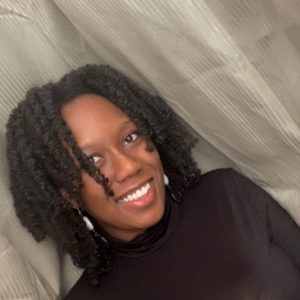
All STEM majors must defeat the dreaded introductory courses – Chemistry, Biology, Physics, and Calculus. When the professor starts a lecture with “You may remember this from High School”, it may be a bit fuzzy but you might remember some of the foundational material learned during that time. Now, imagine instead of having this ‘ah, I remember this’ moment, you’re learning the thing the professor just breezed over for the first time. While you’re trying to grasp what just happened, he’s on a completely different topic that is much more complicated and requires prior knowledge to follow.
This was my entire freshman and sophomore year. Throughout the semesters I had to keep up with both a high school and college curriculum because I didn’t have access to Chemistry, Biology, Physics, or Calculus courses in high school. Despite my valedictorian status, I had only taken one AP course, the only one that was offered–Modern Humanities. This course, although completely unrelated to my interests, helped prepare me for the mandatory English courses in college. I knew how to write and format a 12-page paper, as well as pick apart a book for evidence that supports my theories. This is a common theme for students who graduate from my high school and move on to college–they’re prepared to write an essay but not to solve foundational equations. Ensuring all NYC public schools provide these essential STEM courses is important to universal student success in higher education.
As the city is moving towards more equitable public school practices regarding AP classes, through the 2015 announcement of the Equity and Excellence agenda, the question of who benefits from this and the importance of this agenda has arisen. Statistics from the Education Trust-NY found that “for every 100 NY high school students, about 15 White and 20 Asian students took physics, while only around seven Black or Latino students did the same”, and that in schools in wealthier NYC neighborhoods, the chance of a student attending a school with six or more AP classes was 90%, while the chance of a student accessing this in poorer neighborhoods, where students are more likely to be Black or Hispanic, is only 18%. This statistic proves that this issue disproportionately affects Black and Latino communities, and I’ve experienced this firsthand.
Although the Equity and Excellence agenda has increased the amount of AP classes in schools across NYC, there is still room for improvement. It is estimated by the Center for New York City Affairs at the New School that “nearly four in 10 city high schools do not offer Algebra II and both physics and chemistry”, which should be considered an essential component of college readiness but is usually not offered in the curriculum in Black and Latino communities. You can help make a difference through supporting agendas like the Equity and Excellence program, as well as spreading the word about alternatives to AP courses like College Now.
Lexcy Alexis is a senior at Brooklyn College, majoring in Earth and Environmental Sciences. During an internship in summer 2022, she became interested in hows green infrastructure funding policies can affect how frequently a neighborhood is flooded. Since then, Lexcy has found herself participating in petitions and demonstrations on her campus as a way to help amplify the voices of the people who are affected by campus policies or the lack thereof. As a Young Advocate, she hopes to be able to spark changes in higher education policies by sharing some of her experiences as a first-generation college student, as well as elevating the experiences of her peers. Lexcy joined the Young Advocates Program to be able to better understand these policies and the ways she can advocate for better practices. As she continues her studies in graduate school to become a Hydrologist, she hopes to use her research to push for better water quality legislation throughout the United States and globally.
